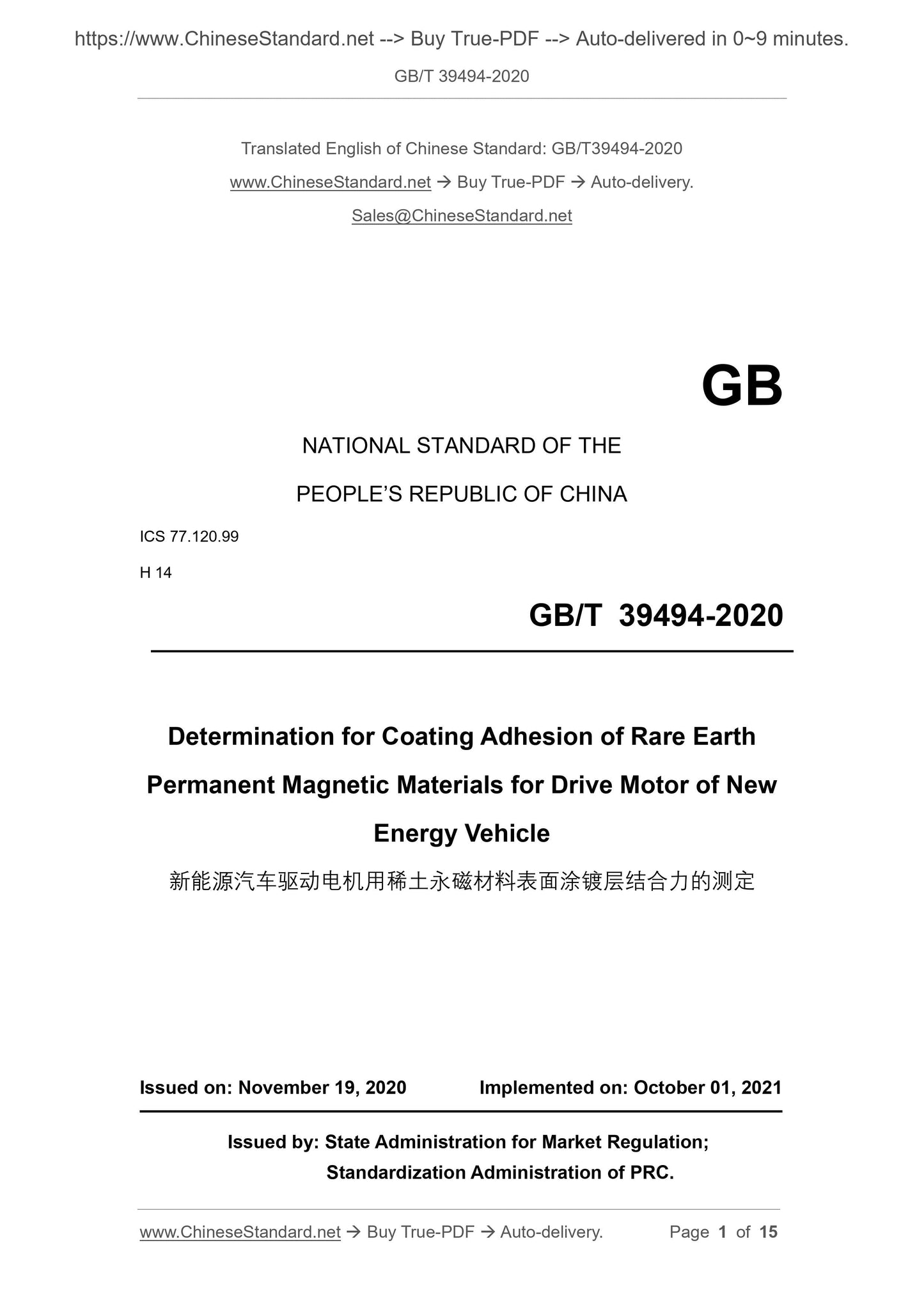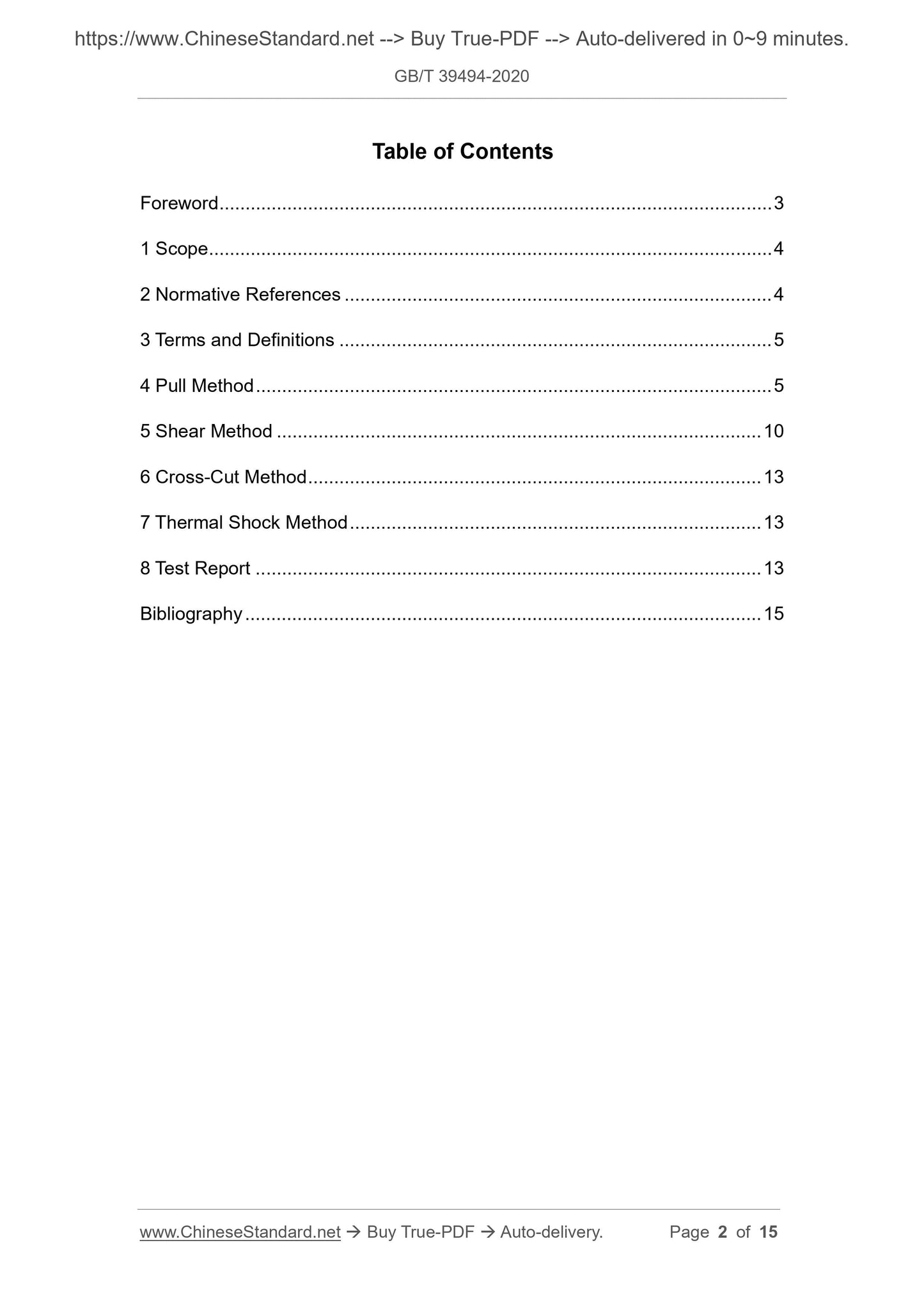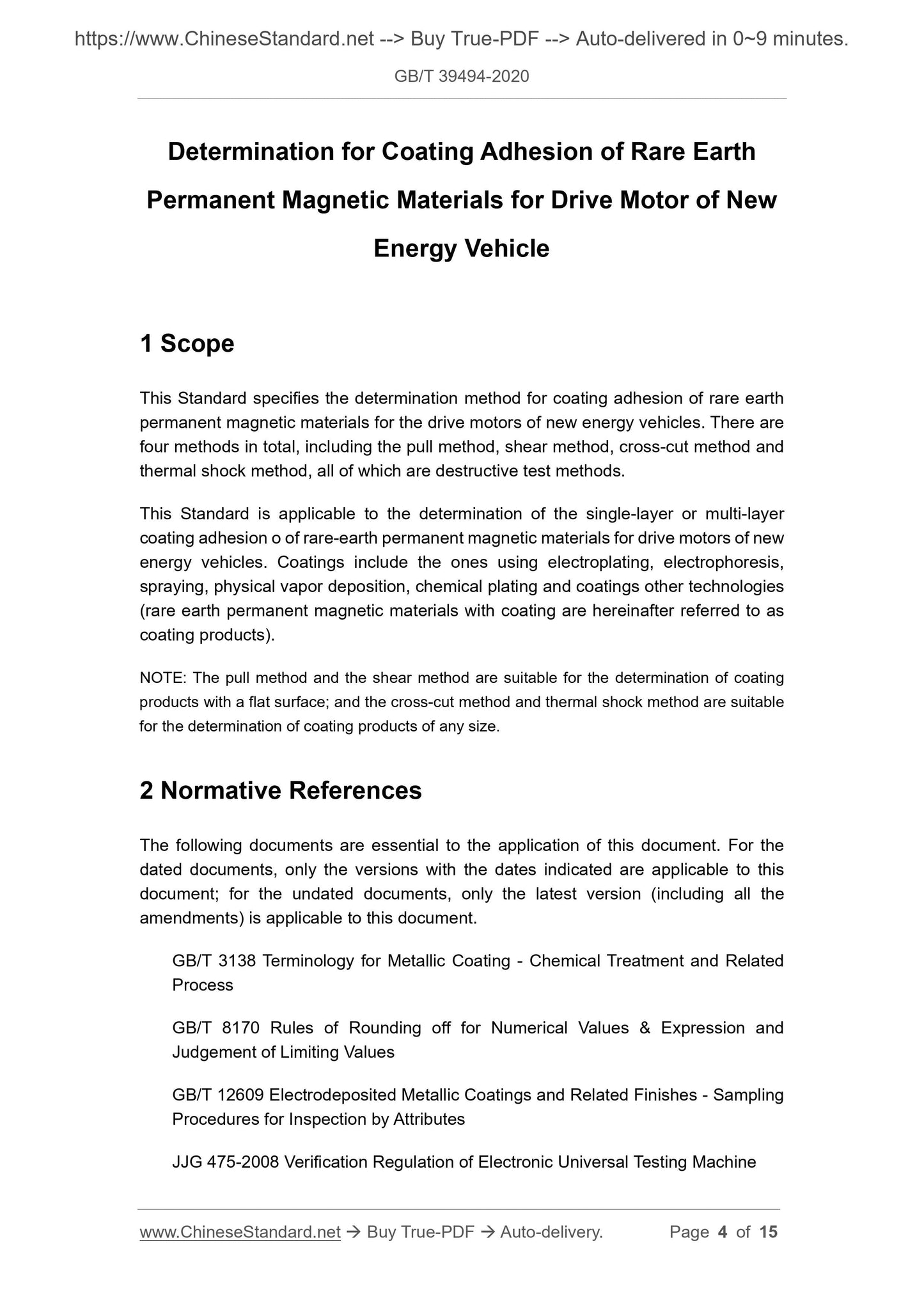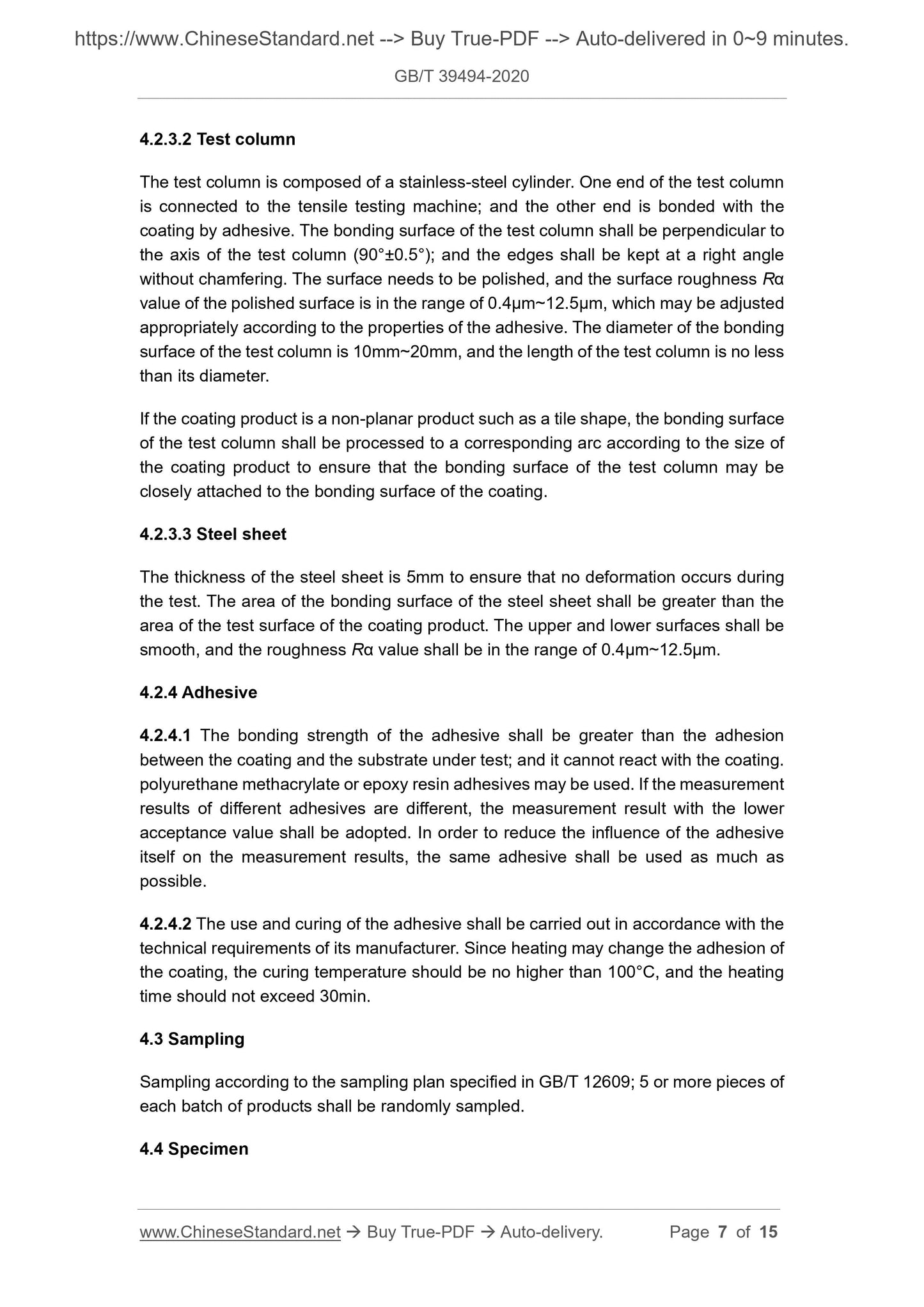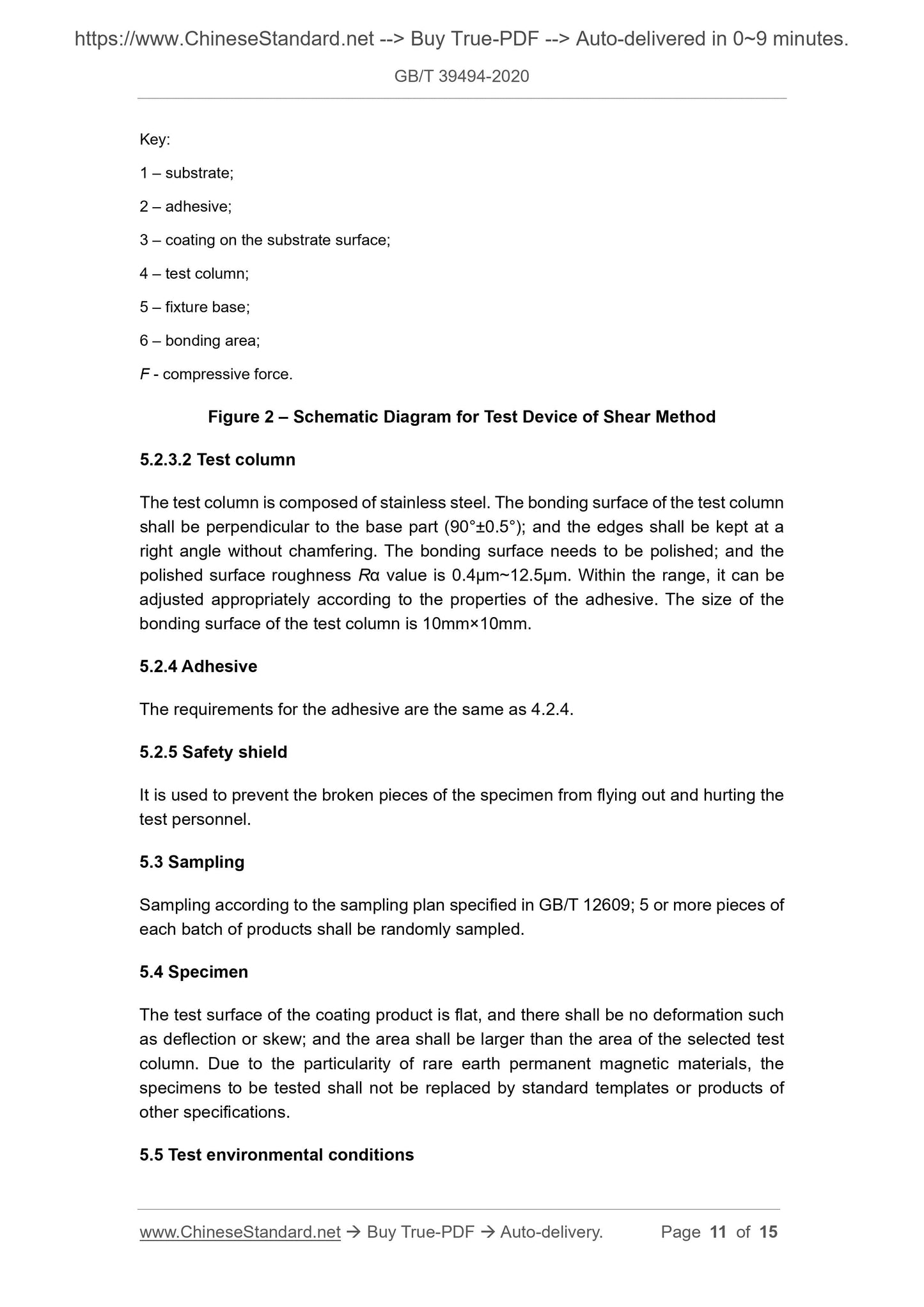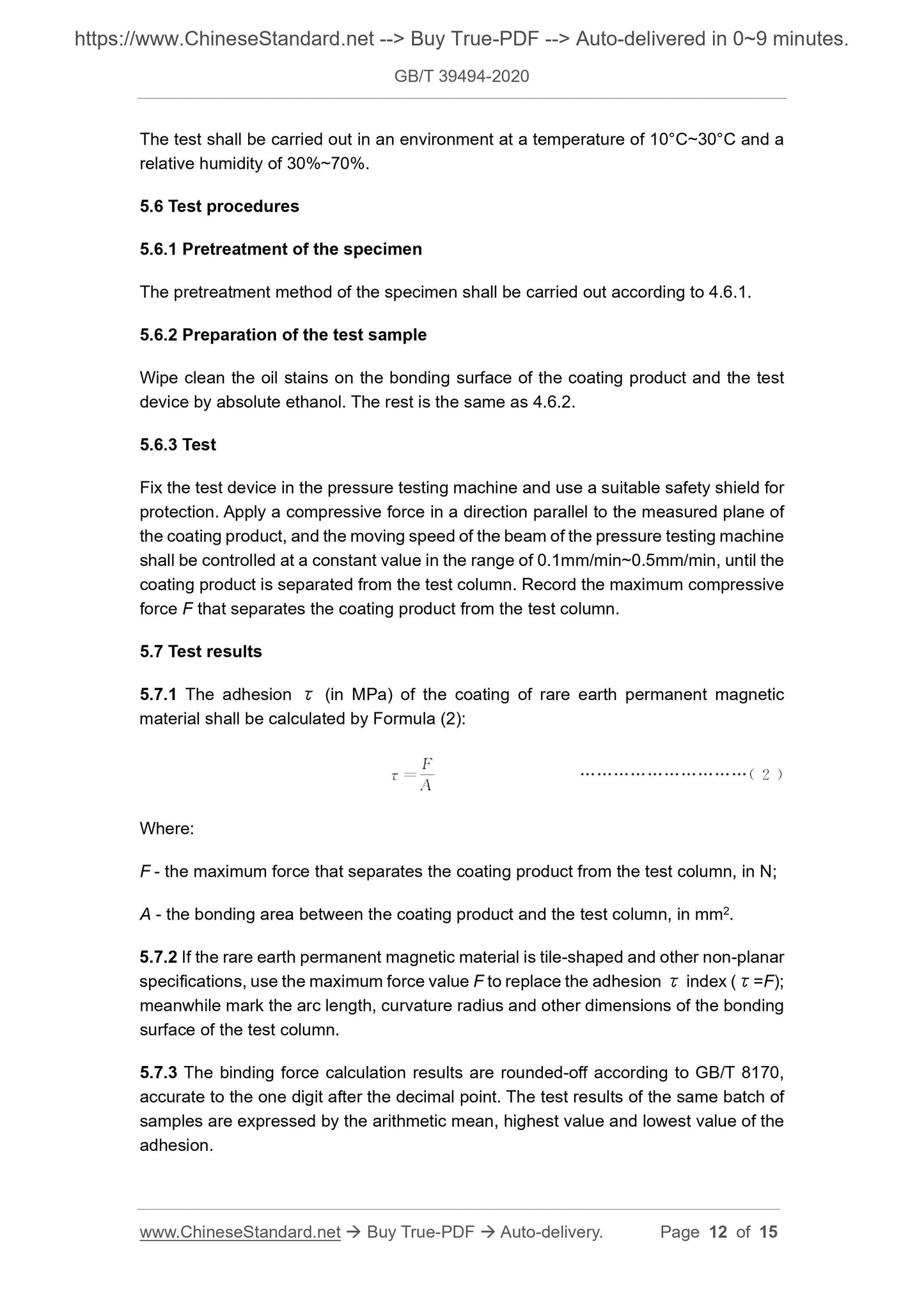1
/
of
7
www.ChineseStandard.us -- Field Test Asia Pte. Ltd.
GB/T 39494-2020 English PDF (GB/T39494-2020)
GB/T 39494-2020 English PDF (GB/T39494-2020)
Regular price
$170.00
Regular price
Sale price
$170.00
Unit price
/
per
Shipping calculated at checkout.
Couldn't load pickup availability
GB/T 39494-2020: Determination for Coating Adhesion of Rare Earth Permanent Magnetic Materials for Drive Motor of New Energy Vehicle
Delivery: 9 seconds. Download (and Email) true-PDF + Invoice.Get Quotation: Click GB/T 39494-2020 (Self-service in 1-minute)
Newer / historical versions: GB/T 39494-2020
Preview True-PDF
Scope
This Standard specifies the determination method for coating adhesion of rare earthpermanent magnetic materials for the drive motors of new energy vehicles. There are
four methods in total, including the pull method, shear method, cross-cut method and
thermal shock method, all of which are destructive test methods.
This Standard is applicable to the determination of the single-layer or multi-layer
coating adhesion o of rare-earth permanent magnetic materials for drive motors of new
energy vehicles. Coatings include the ones using electroplating, electrophoresis,
spraying, physical vapor deposition, chemical plating and coatings other technologies
(rare earth permanent magnetic materials with coating are hereinafter referred to as
coating products).
NOTE: The pull method and the shear method are suitable for the determination of coating
products with a flat surface; and the cross-cut method and thermal shock method are suitable
for the determination of coating products of any size.
Basic Data
| Standard ID | GB/T 39494-2020 (GB/T39494-2020) |
| Description (Translated English) | Determination for Coating Adhesion of Rare Earth Permanent Magnetic Materials for Drive Motor of New Energy Vehicle |
| Sector / Industry | National Standard (Recommended) |
| Classification of Chinese Standard | H14 |
| Word Count Estimation | 10,182 |
| Date of Issue | 2020-11-19 |
| Date of Implementation | 2021-10-01 |
| Regulation (derived from) | National Standard Announcement No. 26 of 2020 |
| Issuing agency(ies) | State Administration for Market Regulation, China National Standardization Administration |
Share
